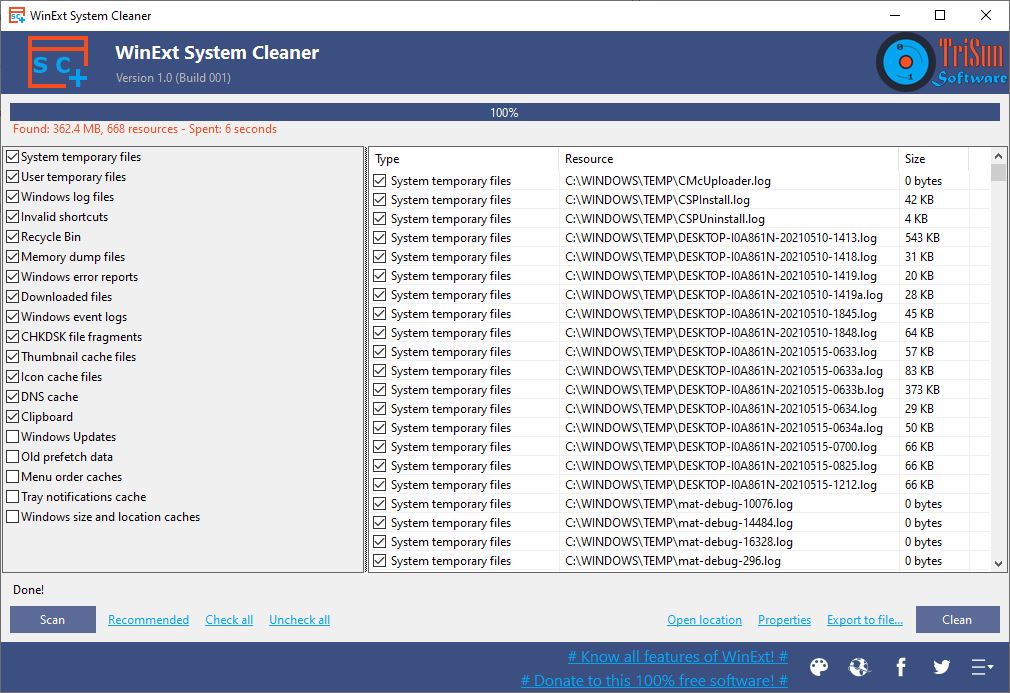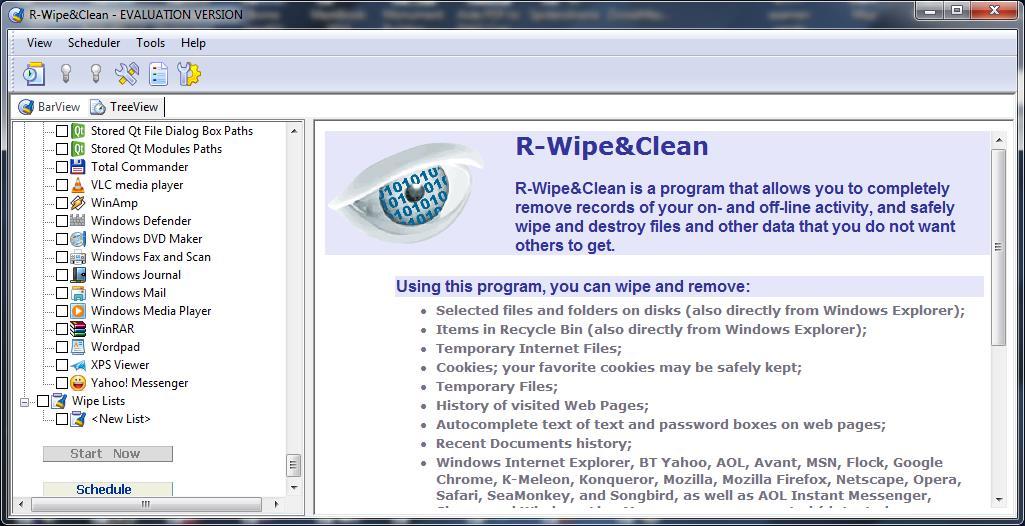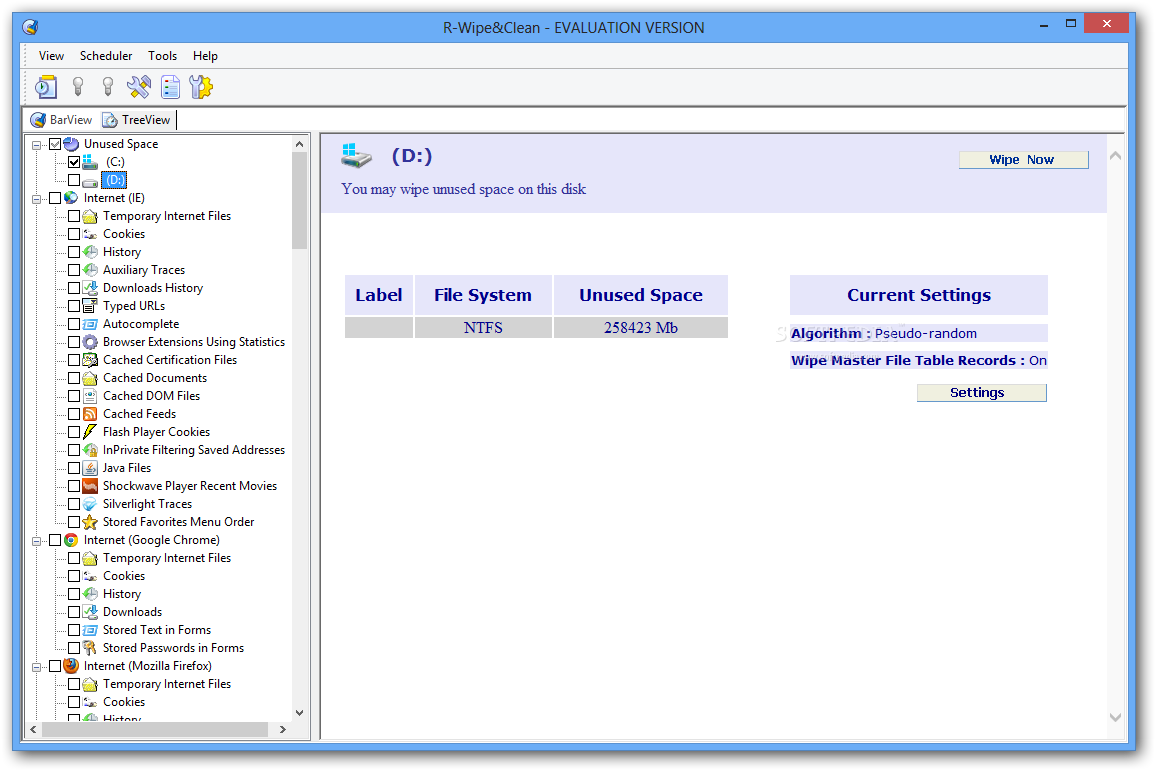

- #WINDOWS RWIPE CLEAN SOFTWARE#
- #WINDOWS RWIPE CLEAN PASSWORD#
- #WINDOWS RWIPE CLEAN PC#
- #WINDOWS RWIPE CLEAN MAC#
- #WINDOWS RWIPE CLEAN WINDOWS#
The clutter or bugs you've got before will disappear with the process of resetting your computer.

It means that your computer is converted to the state it was in when you first got your computer home from the store.

Resetting your laptop puts your computer back in the factory settings. Give your computer away or donate it to others.If you are faced with these, please look through this article. Situations listed below are those you need to reset a computer and wipe it clean.
#WINDOWS RWIPE CLEAN WINDOWS#
In this article, We'll show you how to reset a computer and wipe it clean on your Windows 10/11 PC. Remember to backup your important data first. There is no undo option if you choose the wrong object. In this case, we are going to help you reset a computer and wipe it clean on your Windows 10/11 PC. Imagine a situation that you plan to sell or give your computer away, but don't want your data saved on your computer to be exposed to others.
#WINDOWS RWIPE CLEAN PC#
If you’re selling your computer, you can skip setup by pressing Command + Q and let the new owner complete that process.PAGE CONTENT: Why You Should Wipe Your Computer? Method 1 - Use EaseUS BitWiper to Reset a Computer and Wipe It Clean Method 2 - Reset a Computer to Factory Settings on Windows 10/11 PC Introduction This should look familiar if you’ve set up this computer before.
#WINDOWS RWIPE CLEAN MAC#
To finish the reset, navigate back to the Utilities window and choose Reinstall MacOS to reinstall the original operating system.Īfter the reinstall, the Mac will begin the setup process. Select MacOS Extended (Journaled) format and quit Disk Utility when the process ends.

Then click Macintosh HD in the left sidebar and Erase in the toolbar. Click Disk Utility on the next window and click Continue.
#WINDOWS RWIPE CLEAN PASSWORD#
Hold down the Command + R keys while starting up your Mac and enter your password when prompted. The steps are similar if you have an Intel-based Mac. You’ll then follow the onscreen instructions, which include things like your language and WiFi password. Now click Erase Volume Group, enter your Apple ID when prompted, then click Erase Mac and Restart. You’ll be prompted for a new name (we recommend Macintosh HD, just for the sake of simplicity) and Format (which should be APFS). Once that’s done, click Disk Utility > Hard Drive (again, called Macintosh HD) in the left sidebar > Erase. Click Options.Īt this point, you may be asked to input your username and password. Eventually, a screen will appear featuring a black background and two icons: your hard drive (called Macintosh HD by default) and Options. Then turn it back on while holding down the power button. To perform a factory reset on a Mac with an Apple M-series processor, you’ll first want to turn it off. This step isn’t required, but transferring those account names and passwords onto your new machine will save you the hassle of reentering the WiFi password at the local coffee shop or the log-in info for online retailers. You should also copy your keychains to a flash drive. That can be done in the Apple ID section of the System Preferences app. If you don’t know which one you have, simply click on the Apple menu in the top left corner of the computer’s screen, then click About.īefore you begin the reset, be sure to back up any important files and then sign out of iCloud. Apple has phased out Intel processors since 2020 in favor of its own homegrown M1 and M2 chips. The steps for resetting the device vary slightly depending on whether your Mac has an M-series processor or an Intel processor. Once that’s done, and you’ve verified that the data has been safely backed up, carrying out a factory reset is simple, whether you’re on a, Mac, Windows PC, or Chromebook. “Just make sure you’re wearing safety glasses.”Īnd before performing a factory reset (or, perhaps, breaking out the hammer and nails), be sure to back up any important data on the computer to another drive or to the cloud. “The gold standard in hard drive security consists of using a pointy nail and a few swift swings of a hammer,” Fisco says half-jokingly. If that’s a significant concern-maybe you’re planning to sell the device to a stranger on eBay-go ahead and remove the hard drive, says Richard Fisco, who oversees electronics testing for Consumer Reports.Īfter all, a hacker can’t break into a hard drive that’s not there.
#WINDOWS RWIPE CLEAN SOFTWARE#
While a factory reset is generally sufficient, a determined hacker could, at least theoretically, use advanced data recovery software to retrieve your old files. Reinstalling your system before sale is a much safer alternative.” “Or you can miss deleting some important files altogether. “You’re likely to forget things like passwords saved in browsers and personal data in the deleted items folder,” says Matt Ham, owner of the service company Computer Repair Doctor.


 0 kommentar(er)
0 kommentar(er)
